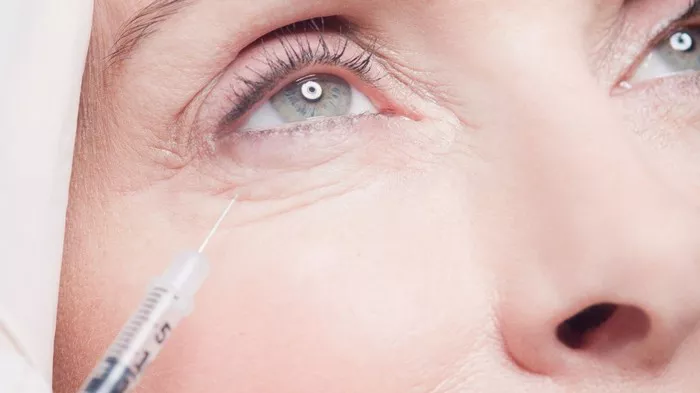Botox, a popular cosmetic treatment known for its ability to reduce wrinkles and fine lines, can sometimes lead to an unexpected side effect: a droopy eyelid. Medically referred to as “ptosis,” this condition occurs when the upper eyelid droops, partially covering the eye and affecting both appearance and vision. If you’re considering Botox or have experienced a droopy eyelid after treatment, understanding the relationship between Botox and droopy eyelids, as well as the duration of this side effect, is crucial. In this article, we’ll delve into the connection between Botox and droopy eyelids, the factors influencing its duration, and steps you can take for a safe and informed experience.
Understanding Botox and Its Mechanism
Botox, derived from the bacterium Clostridium botulinum, is a neurotoxin that temporarily paralyzes muscles by blocking nerve signals. In cosmetic applications, Botox injections are used to relax muscles and reduce the appearance of wrinkles and fine lines, particularly in areas like the forehead, between the eyebrows, and around the eyes (crow’s feet).
Botox and Droopy Eyelid: How Does It Happen?
Droopy eyelids, technically termed “Botox-induced ptosis,” can occur when the Botox solution diffuses beyond the intended treatment area and affects the muscles responsible for lifting the eyelids. These muscles, known as the levator palpebrae superioris muscles, play a crucial role in keeping the upper eyelids elevated. When they are impacted by Botox, the eyelid may droop.
Duration of Botox-Induced Droopy Eyelid
The duration of Botox-induced droopy eyelid varies based on several factors:
Type and Dosage of Botox: The type of Botox used and the dosage administered can influence the onset and duration of the side effect. Different types of Botox may have varying effects on muscle movement and diffusion.
Individual Variation: Each person’s response to Botox is unique. Some individuals may experience droopy eyelids sooner than others, and the duration of the side effect can also vary.
Metabolism and Clearance: How quickly your body metabolizes and clears Botox from the system can impact how long the droopy eyelid lasts.
Treatment Area: The location of the Botox injections also plays a role. Droopy eyelids can occur when Botox is injected near the eyebrows or crow’s feet, affecting the nearby muscles.
Temporary Nature of the Side Effect
It’s important to note that Botox-induced droopy eyelid is usually temporary. In most cases, the side effect begins to appear within a few days after the injection and gradually becomes more noticeable over the next week or so. Fortunately, the effects of the Botox treatment are not permanent, and the droopy eyelid typically improves as the Botox gradually wears off.
Managing Botox-Induced Droopy Eyelid
If you experience a droopy eyelid after Botox treatment, consider the following:
Contact Your Provider: If you notice a droopy eyelid after Botox, contact your healthcare provider or the practitioner who administered the treatment. They can assess the situation, provide guidance, and recommend appropriate actions.
Timeframe for Improvement: Botox-induced droopy eyelids often begin to improve as the Botox wears off, usually within a few weeks to a couple of months after the treatment.
Avoid Rubbing or Touching: Refrain from rubbing or touching the affected eyelid, as this can worsen the condition or cause further irritation.
Consider Reversal: In some cases, a skilled practitioner may use specific techniques or medications to help reverse the effects of Botox-induced droopy eyelid if necessary.
Prevention and Precautions
To minimize the risk of droopy eyelids after Botox treatment, follow these precautions:
Choose an Experienced Practitioner: Opt for a qualified and experienced healthcare provider who is well-versed in administering Botox injections and understands facial anatomy.
Discuss Your Concerns: During your consultation, communicate your concerns and aesthetic goals with the practitioner. They can tailor the treatment plan to achieve desired results while minimizing the risk of side effects.
Follow Post-Treatment Instructions: Adhere to any post-treatment instructions provided by your practitioner to optimize your recovery and results.
Conclusion
Botox-induced droopy eyelid, while an undesirable side effect, is generally temporary and can be managed with proper care and guidance from a healthcare provider. The duration of the droopy eyelid side effect varies based on factors such as the type of Botox used, dosage, and individual response. If you experience this side effect, contacting your provider and following their recommendations is crucial for a safe and informed recovery. By choosing an experienced practitioner, discussing your concerns, and following post-treatment instructions, you can minimize the risk of droopy eyelids and enjoy the benefits of Botox treatments with confidence.


